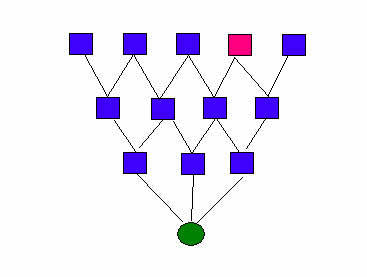l
What if one of the underlying theories is wrong? What if atoms do not exist does the fact that we expect allow us to find them? What if we are just a giant computer simulation? (Anyone seen “The Matrix”?)
lYou
can discuss this if you wish on the discussion board.
lA
pictorial description of a theory (green) and its
relationship to the other theories that it
builds on (blue).
lWhat
if one of them was wrong (red)?

Figure 2:
A pictorial description